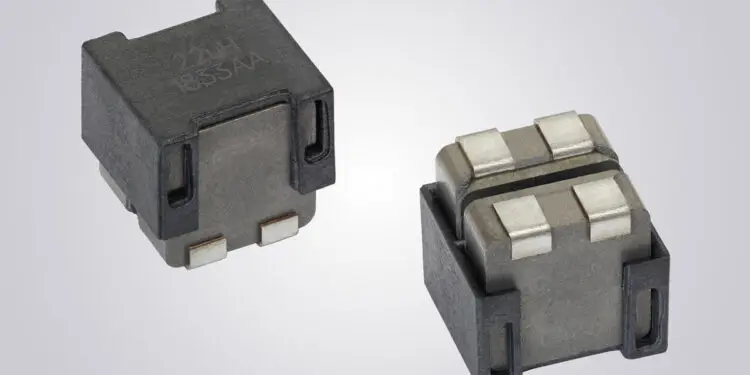Vishay Intertechnology, Inc. introduced a new Automotive Grade low profile, high current dual inductor in the 2525 case size. Designed to replace the two inductors required in an automotive Class D audio amplifier with a single device, the Vishay Dale IHLD-2525GG-5A reduces board space requirements and component counts, while providing improved THD performance over other inductor types.
To provide noise filtering in Class D amplifiers, the AEC-Q200 qualified device released today consists of two IHLP inductors with operating temperatures up to +155 °C in one compact package. The IHLD-2525GG-5A features an optimal design that realizes higher quality sound and lower distortion than other solutions, while offering low coupling for minimal cross-talk between its integrated inductors.
Designed to operate at higher carrier frequencies up to 2.1 MHz, the IHLD-2525GG-5A delivers high efficiency with typical DCR from 7.06 mΩ to 154 mΩ and a wide range of inductance values from 1.0 µH to 22 µH. The device provides rated current to 13.0 A and handles high transient current spikes without saturation. Packaged in a 100 % lead (Pb)-free shielded, composite construction that reduces buzz to ultra low levels, the dual inductor offers high resistance to thermal shock, moisture, and mechanical shock.
Device Specification Table:
| Case size | 2525 |
| Inductance range (μH) | 1.0 to 22 |
| DCR typ. (mΩ) | 7.06 to 154 |
| DCR max. (mΩ) | 7.77 to 164.80 |
| Heat rating current (A) | 2.2 to 13.0 |
| Saturation current (A) | 2.5 to 12.3 |
| SRF typ. (MHz) | 10.9 to 56.7 |
Samples and production quantities of the new dual inductor are available now, with lead times of 12 weeks for large orders.































